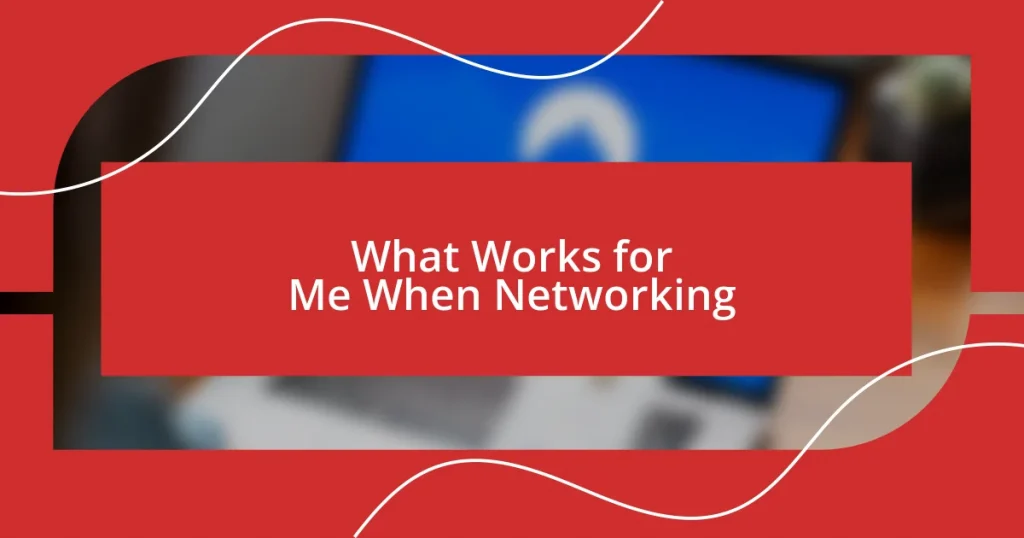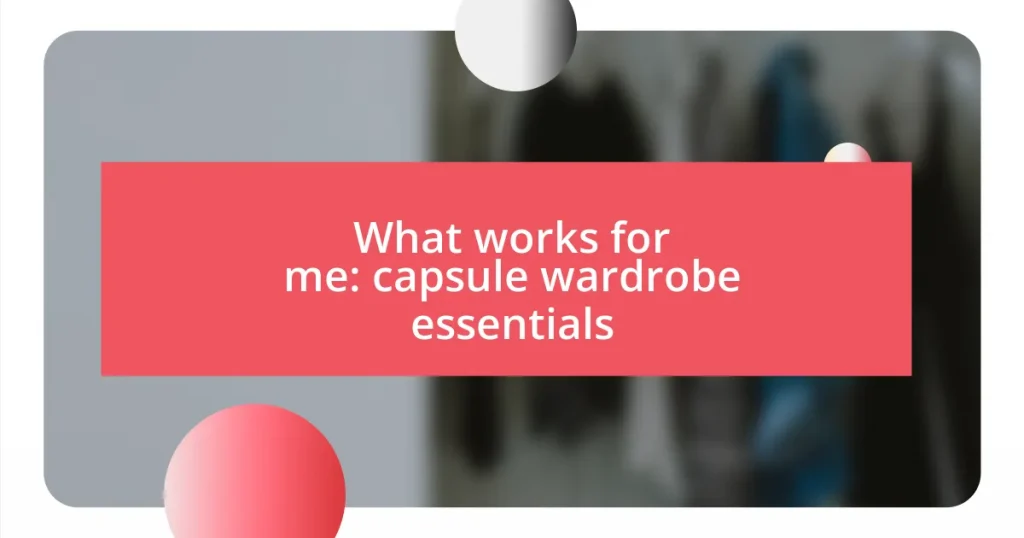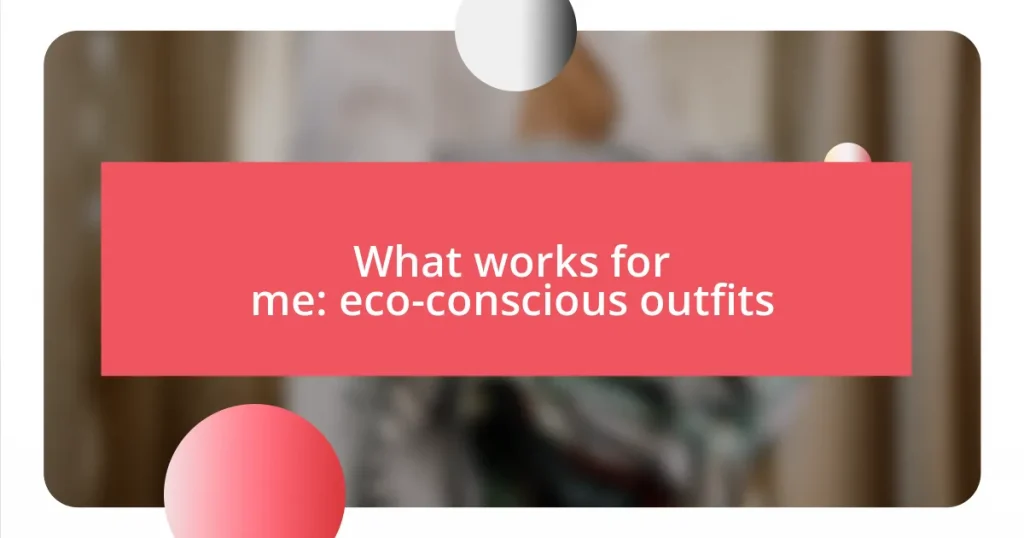Key takeaways:
- Effective networking is built on genuine relationships and authenticity, focusing on meaningful conversations rather than just contact accumulation.
- Setting clear networking goals enhances focus and purpose, leading to more fruitful interactions and quality relationships.
- Following up and maintaining connections through consistent communication and celebrating others’ achievements is crucial for nurturing relationships over time.
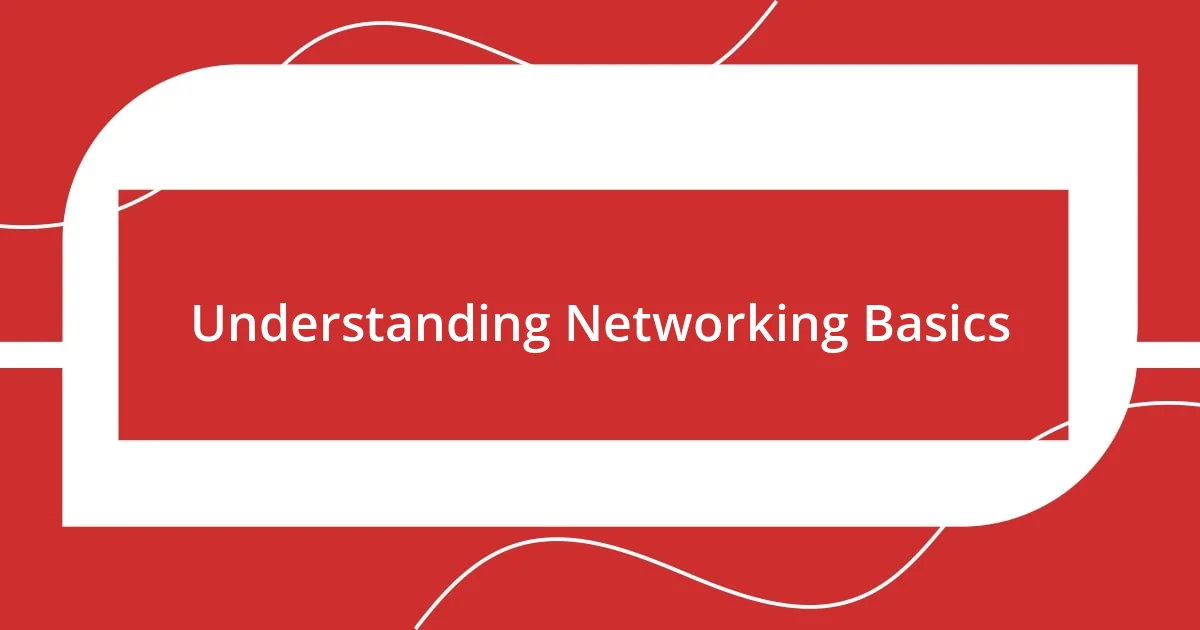
Understanding Networking Basics
Networking goes beyond exchanging business cards; it’s about building genuine relationships. I remember attending my first industry event, feeling nervous as I scanned the crowded room for familiar faces. Have you ever felt that way? That’s normal! But I discovered that starting conversations, even with a simple compliment or open-ended questions, can break the ice and lead to meaningful connections.
At its core, effective networking hinges on authenticity. I once reached out to someone I admired, not just for career advice but to understand their journey. Their willingness to share their story not only inspired me but also fostered a lasting relationship. Isn’t it fascinating how a sincere approach can unlock opportunities you didn’t even know existed?
Understanding the basics of networking also involves acknowledging the reciprocity principle. When I think back to the times I’ve helped others connect or offered support without expecting anything in return, it’s heartening to see how those gestures have come back to benefit me later. Don’t you think it’s rewarding to contribute to someone else’s success? After all, it’s the give-and-take nature of networking that cultivates a supportive and thriving community.
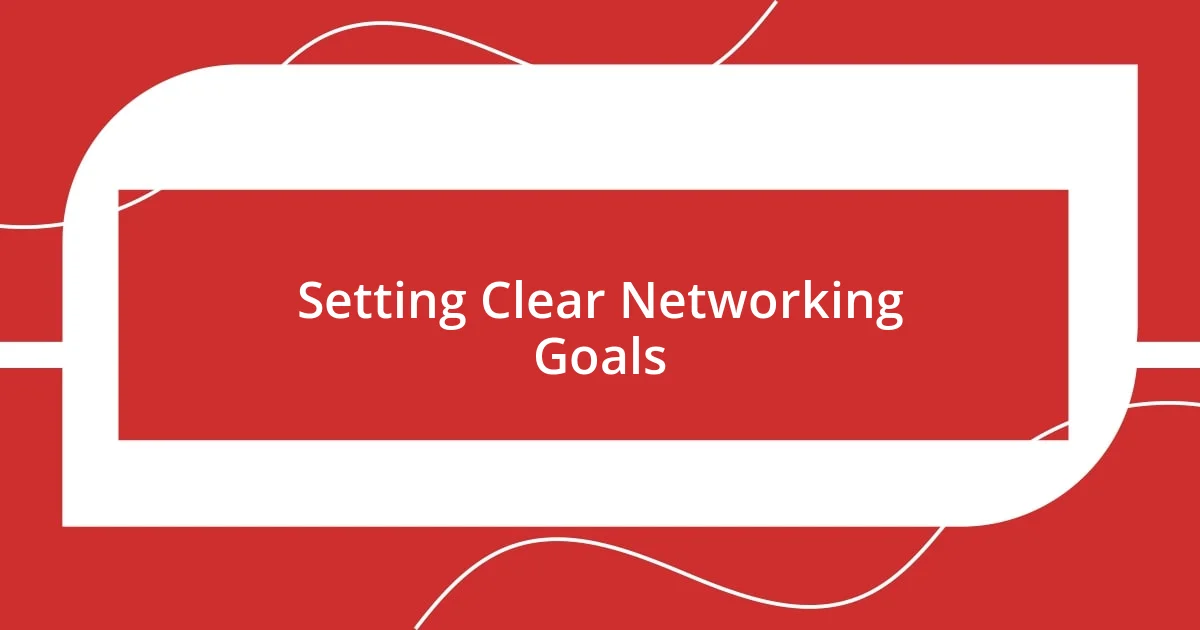
Setting Clear Networking Goals
Setting clear networking goals is crucial for making the most of your efforts. I remember when I first started networking, my approach was quite broad—just meet as many people as possible. Over time, I realized that defining specific objectives changed everything. Instead of wandering aimlessly through a room, I focused on connecting with individuals who could help me grow in my career or share insights related to my specific interests.
Consider the following steps to set your networking goals effectively:
– Identify what you want to achieve: Are you looking for mentorship, collaborations, or potential job leads?
– Determine your target audience: Who do you want to connect with, and why?
– Set measurable outcomes: Aim for attending a certain number of events each month or connecting with specific individuals.
– Reflect regularly: Check-in with your goals to ensure they align with your evolving career path.
When my goals became clearer, networking felt less like a chore and more like an exciting quest. It’s liberating to engage with a purpose in mind, and it often leads to more fruitful conversations. If you approach networking with clarity, you’ll find the outcome is not just the number of contacts but the quality of those relationships.
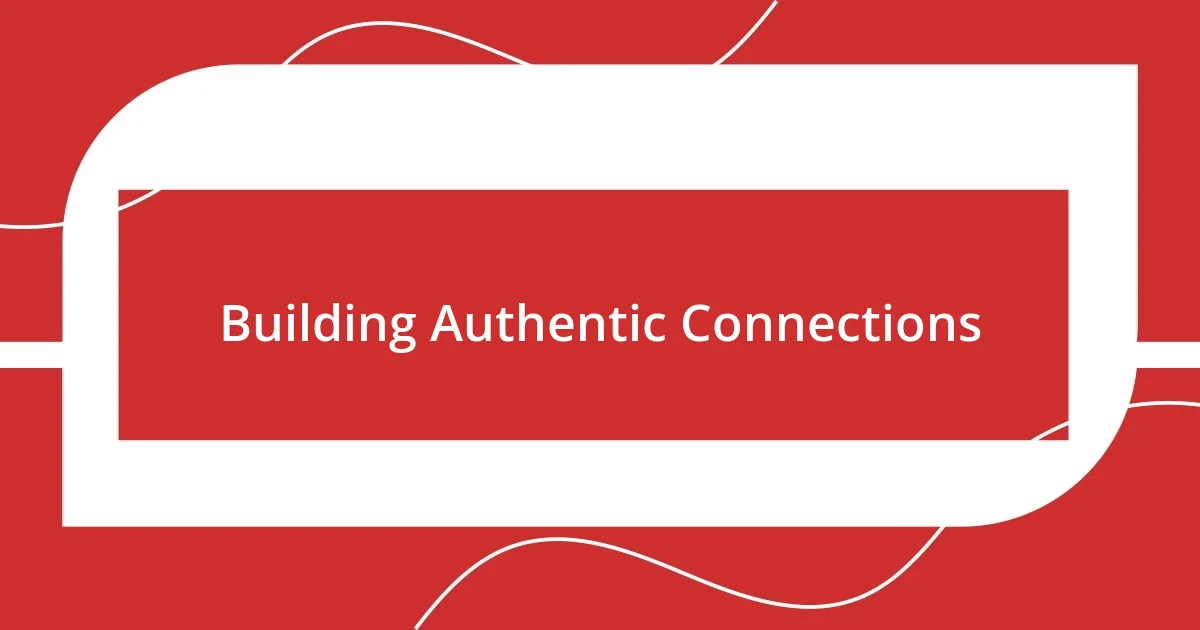
Building Authentic Connections
Building authentic connections is all about being genuine and present in the moment. I remember one event where I found myself deep in conversation with a fellow attendee about our shared love for a specific hobby—something we stumbled upon quite organically. The connection felt effortless and true. Have you ever noticed how conversations like that tend to linger in your memory? They often lead to deeper friendships rather than surface-level networking.
It’s also essential to listen actively. I recall a time when I was attending a workshop, and a participant shared a personal story about their career transition. Instead of preparing my response, I allowed myself to be fully engaged in their narrative. That openness led to an unexpected bond. Authentic connections flourish when we offer our complete attention and validation to others. Don’t you find that such moments can make a significant impact on our professional lives?
Another critical aspect of building these connections lies in vulnerability. Sharing my own uncertainties during conversations has often opened doors. When I openly discussed a challenge I faced, I was surprised by the support and advice that followed. It’s interesting how candidness can break down barriers and encourage others to share as well. Authenticity in relationships builds trust, and trust is what sustains connections over time.
| Aspect | Details |
|---|---|
| Be Genuine | Engage in real conversations that spark joy and connection. |
| Listen Actively | Show genuine interest and embrace the stories shared by others. |
| Embrace Vulnerability | Share your challenges to foster deeper trust and understanding. |
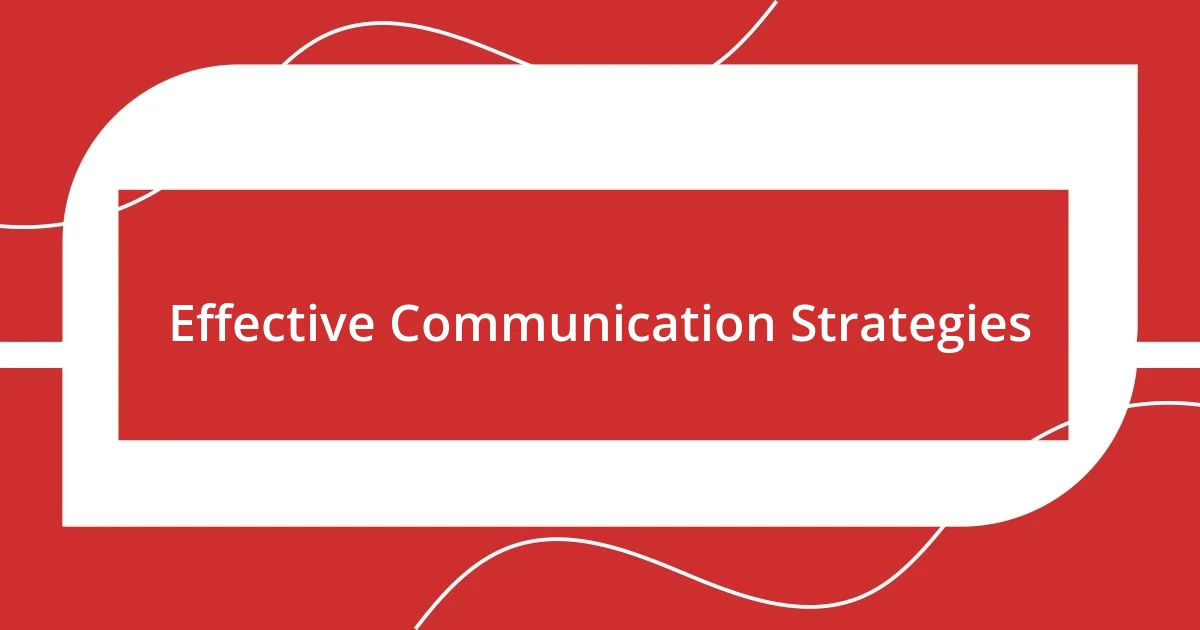
Effective Communication Strategies
Effective communication is not just about exchanging information; it’s about creating connections and understanding. One of my most memorable networking experiences happened at a local conference where I simply approached a group of attendees and asked open-ended questions. “What inspired you to join this session?” or “What challenges have you faced in your field?” By inviting dialogue, I didn’t just learn from their answers, I discovered shared experiences that ignited deeper conversations. Don’t you think a question can be the bridge to a genuine relationship?
Another strategy I’ve found incredibly useful is tailoring my communication style to match the dynamics of the conversation. There was a time when I met a senior executive whose communication was very direct and to the point. Initially, I felt pressured to mirror that style. But as I relaxed and allowed my natural conversational tone to emerge, it shifted the atmosphere. We found common ground in storytelling, which led to a rich exchange about our passions. Adapting your style without losing authenticity can make interactions enjoyable and fruitful.
Lastly, incorporating non-verbal communication is vital; it often speaks louder than words. I remember attending a networking event where a simple smile and eye contact from me worked wonders. It made others more approachable and open to conversations. Have you noticed how a confident stance or an inviting gesture can transform the energy of an interaction? Being aware of body language, both yours and others’, enhances the overall communication experience and fosters a welcoming environment.
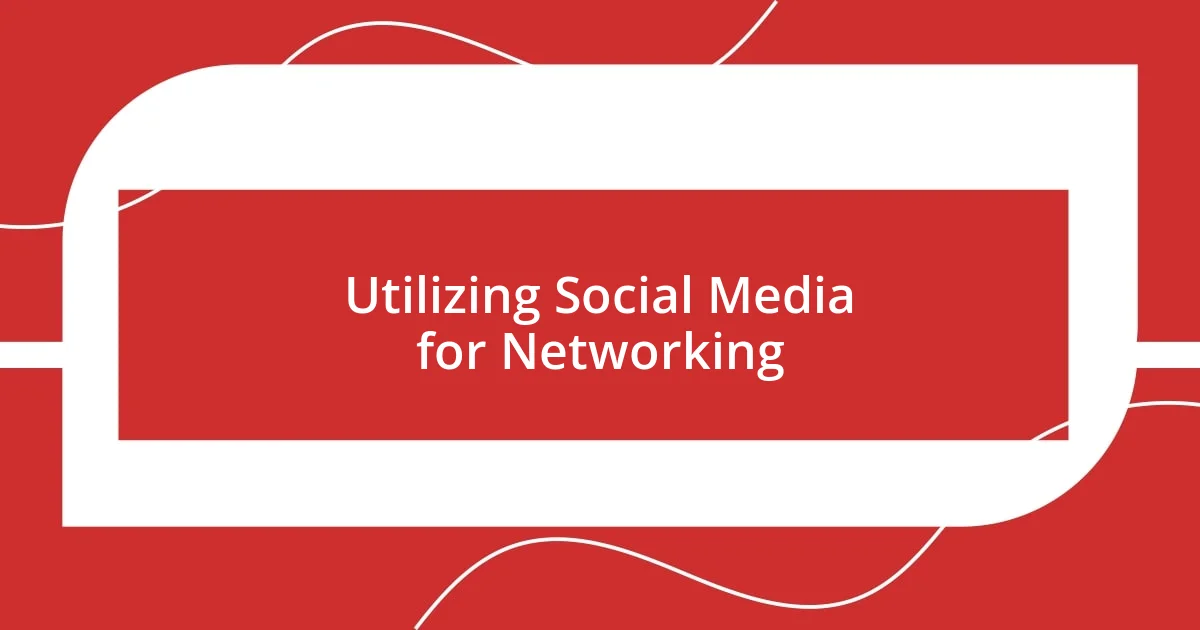
Utilizing Social Media for Networking
Utilizing social media for networking has become an essential tool in my professional toolkit. I can still remember the excitement I felt after connecting with industry leaders on platforms like LinkedIn. By sharing insightful articles and engaging with their posts, I managed to draw their attention. It’s fascinating how digital interactions can lead to real-life opportunities. Have you ever considered how a simple comment on a thought-provoking post could catch someone’s eye?
One of the most valuable lessons I learned is the importance of consistency. Regularly updating my profiles and actively participating in discussions has not only showcased my expertise but also helped me stay top-of-mind. In my experience, the networking game is not only about making connections, but also about nurturing them over time. I remember developing a professional bond with someone who initially seemed distant. Through thoughtful interactions online, we later collaborated on a project that would not have happened without that initial social media engagement.
Moreover, using social media for networking allows for a broader reach. I recall attending a virtual seminar where the speaker encouraged attendees to tweet their thoughts. Not only did I express my opinions during the event, but I also connected with other participants. It struck me how quickly a shared experience on social media could foster new relationships. Have you ever taken a moment to engage online during an event? It might just unlock doors to meaningful connections that are waiting to be explored.
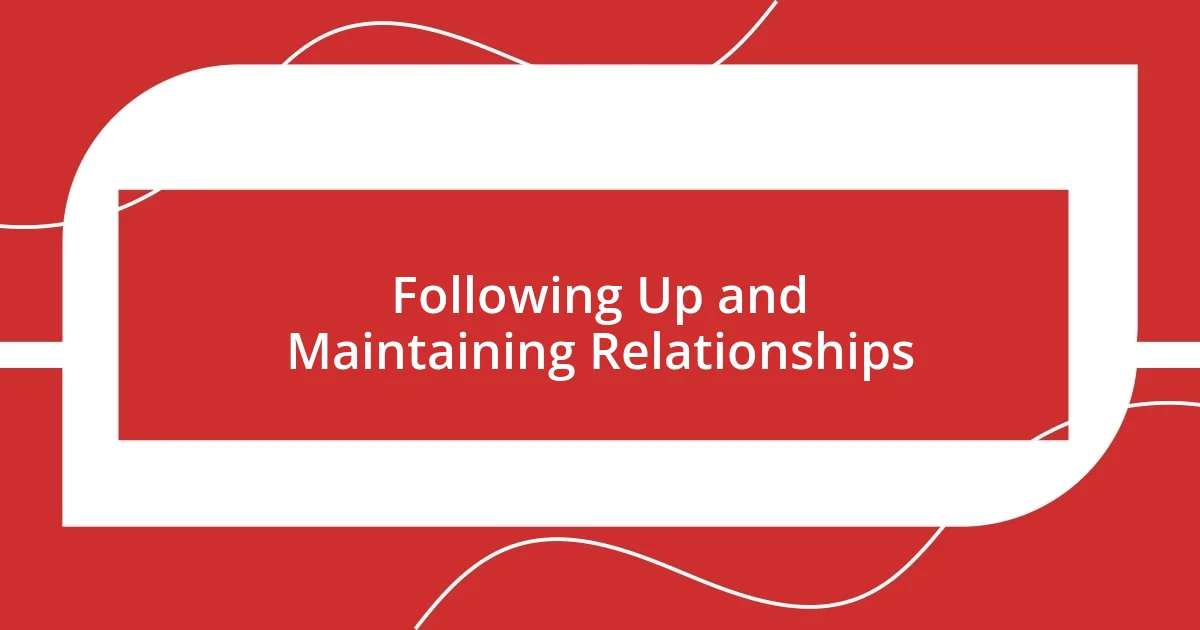
Following Up and Maintaining Relationships
Following up after an initial meeting is something I consider vital in maintaining relationships. After a networking event, I make it a point to send a quick message to anyone I connected with, often referencing something specific we discussed. I recall sending a note to a fellow attendee who shared a fantastic book recommendation. That simple act not only solidified our connection but opened the door for future discussions. How often do you think people forget the impact of a simple follow-up?
Maintaining relationships doesn’t just stop at that initial contact; it requires ongoing effort to truly thrive. I have set reminders to check in with contacts quarterly. Whether it’s sharing an interesting article or asking about their latest project, those touchpoints demonstrate that I care. I once reconnected with a graduate school colleague this way, leading to a fruitful collaboration. Isn’t it interesting how a little persistence can lead to surprising opportunities?
Lastly, I find that celebrating milestones in others’ careers can be an effective way to nurture relationships. I remember hearing about a former coworker landing her dream job through LinkedIn. I reached out to congratulate her, and our conversation quickly turned into planning a lunch catch-up. Celebrating achievements not only reinforces the bond but also shows that I’m genuinely invested in their journey. Do you think acknowledging others’ successes can strengthen your professional network?
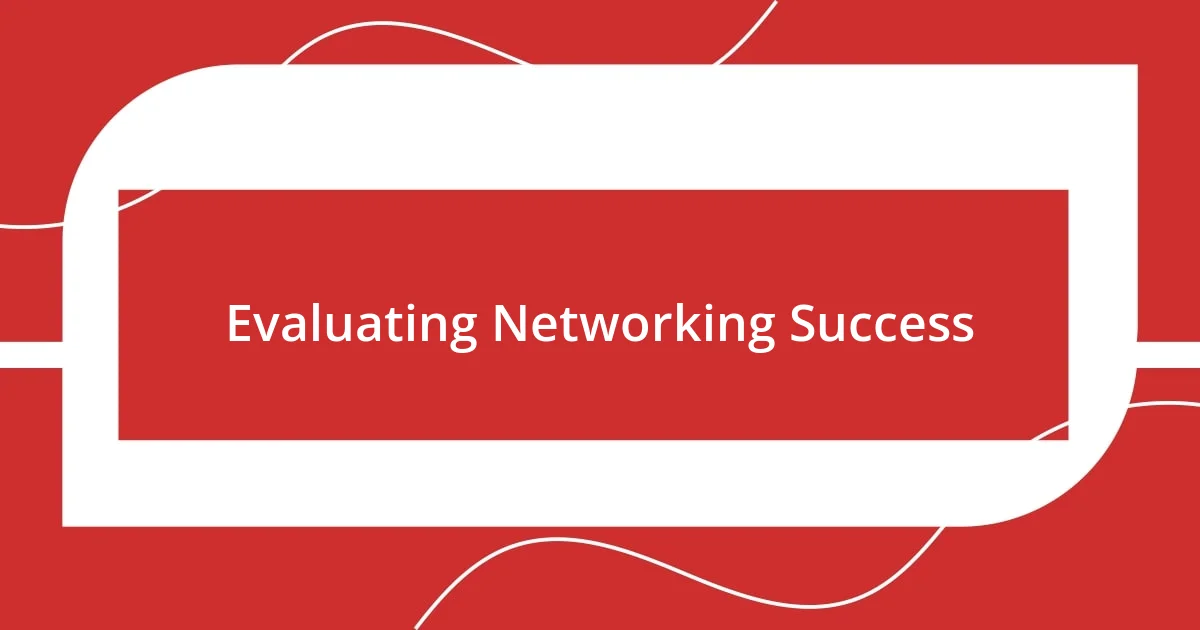
Evaluating Networking Success
Evaluating the success of my networking efforts is a reflective process. I often look back at the relationships I’ve built and consider how they’ve impacted my career. For instance, after a particularly engaging conference, I found myself not just with a stack of business cards, but also with invitations to future collaborations. Have you ever thought about how many real opportunities arise from those initial connections?
One key metric I rely on is the genuine value of connections. Instead of just counting the number of contacts, I assess how many lead to meaningful discussions or projects. I remember reaching out to someone I met at a workshop about a specific topic we had both discussed. That conversation turned into a mentorship relationship that not only enriched my knowledge but also boosted my confidence. Isn’t it fascinating how one connection can lead to personal growth?
Additionally, I pay attention to the quality of interactions. Regularly chatting or exchanging ideas with a select few can often yield better results than mingling with a crowd. During a meetup last year, I found myself in deep conversation with a software developer, and that dialogue ignited an idea for a joint initiative that I would have never pursued otherwise. Do you recognize the potential in focusing on depth over breadth when it comes to networking?










